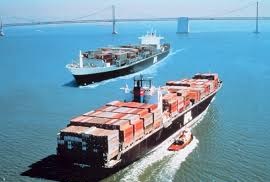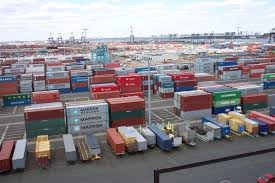Import of Goods Austria : usp.gv.at
Organisation : Business Service Portal
Facility Name : Import of Goods
Applicable For : Entrepreneurs
Country : Austria
Website : https://www.usp.gv.at/aussenwirtschaft/einfuhr-von-waren.html
| Want to comment on this post? Go to bottom of this page. |
|---|
How To Import Goods in Austria?
Entrepreneurs who wish to import goods should, among other things.
Related / Similar Facility : Register of Beneficial Owners Austria

The following consider:
1. For what reason do I want to import the goods?
** Securities or other ownership acquisition or – transfer
** Repair, replacement
** Rent, rent
** Is it planned to re-export later?
2. Which customs procedure is especially suitable for this purpose?
3. Can I use customs simplification options?
** Are there reduced customs deformation formations in these cases?
** Can I ITuse IT-based procedures?
What customs papers do I need to use?
(e.g. Standard paper, shipping accompanying document, Carnet TIR or Carnet ATA)
Note:
When importing goods into the European Union, a distinction is made between Union goods and non-union goods. Depending on the type and origin of the goods, there are different conditions for import.
Requirements of Non-Union Goods Import
The import of non-union goods requires the following steps:
1. Applying for an EORI number, if not already available:
For all activities (including passive) covered by the provisions of customs law (e.g. as an importer, exporter, applicant, authorized license holder in customs proceedings), economic operators need an EORI number (Economic Operators’ Registration Identification Number).
The prerequisite is that they have their registered office or place of residence in the Union’s customs territory (in the specific case in Austria). In order to obtain an EORI number, they must register with the Austrian Customs Administration (EORI application procedure (MFBMF)). The EORI number is used for an EU – uniform identification of economic operators across the EU.
2. Registration in advance:
Security-specific information (MFBMF) about goods brought to the customs territory or from the customs territory must be reported early on the customs authorities. These “advance applications” must be transmitted before each import and export in the form of summary incoming or outgoing applications (or in customs declarations).
Exception :
The safety regulations are not applied in the movement of goods with Switzerland and Liechtenstein.
3. Bring goods to the customs territory and place:
** The goods transported to the Union territory must be transported immediately to the nearest customs office, as they will be monitored customsly from the time of transport.
** The customs authority must check whether customs law and any other applicable regulations are being complied with and possibly z.B.carry out special official acts, such as a view of goods (customs official examination).
** By providing the goods, the customs authority is informed that goods are located at the customs office.
** With reference to the pre-registration, the person who brought the goods to the customs territory must present the freight documents.
** Non-union goods must be transferred or re-executed within certain periods of procedure (customs clearance).
4. Register goods for a customs procedure:
The transfer of non-union goods to a customs procedure is subject to a formal procedure, the so-called clearance. The most common type of customs clearance is the transfer to free circulation under customs law. As a result, goods change their status: non-union goods enter the EU economic cycle and can circulate there without customs restrictions.

However, economically it may become necessary to transfer goods to other customs procedures in order to freely transfer them from incoming taxes
** (shipping),
** to store (Zollager),
** to use for a specific period (so-spass use),
** to process or process (active finishing).
In order to transfer the goods to a suitable customs procedure, they must be registered electronically (via e-customs) in this customs procedure. The so-called unit paper/AT may only be used in exceptional cases (emergency procedures or travel). In some cases, oral customs declaration or →BMF other simplification (→BMF) is possible.
5. Pay Incoming Taxes:
When importing goods, a distinction is made between the following types of incoming taxes:
** Import taxes
** These are uniformly regulated customs duties and agricultural taxes, the amount of import duties is based on the EU Common Customs Tariff.
** Anti-dumping respectively Balancing duties: To protect the European market against dumped or subsidised imports, the European Union (EU) has the system of anti-dumping and anti-subsidy measures (→Federal Ministry of Finance).
** Other incoming taxes
** This is the sum of all national charges to be paid on imports. This includes in particular import sales tax (EUSt) and the veins.
** These national charges are only harmonised in the system, i.e. their functioning is almost uniform in the EU, but their height varies from the EU to the EU to the EU.
6. Meet Reporting Obligations:
Furthermore, there are certain reporting obligations, such as the Intrastat notice or Summary message.